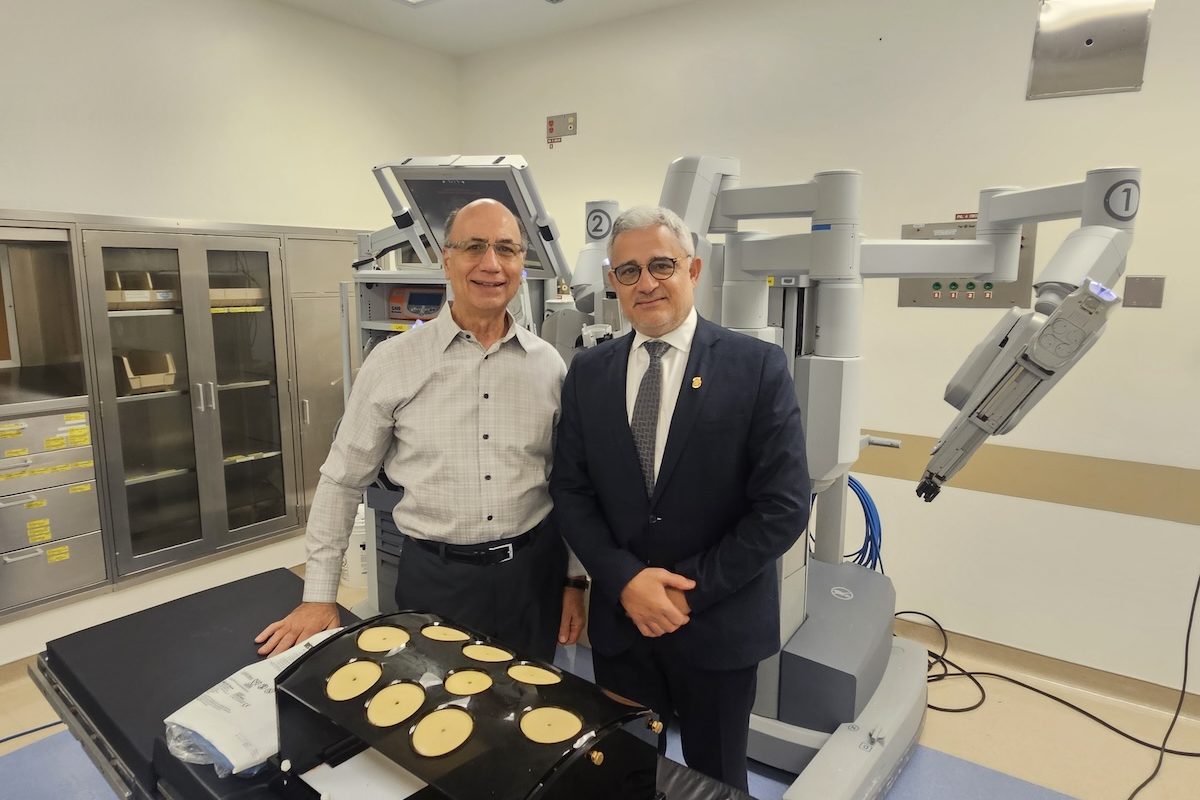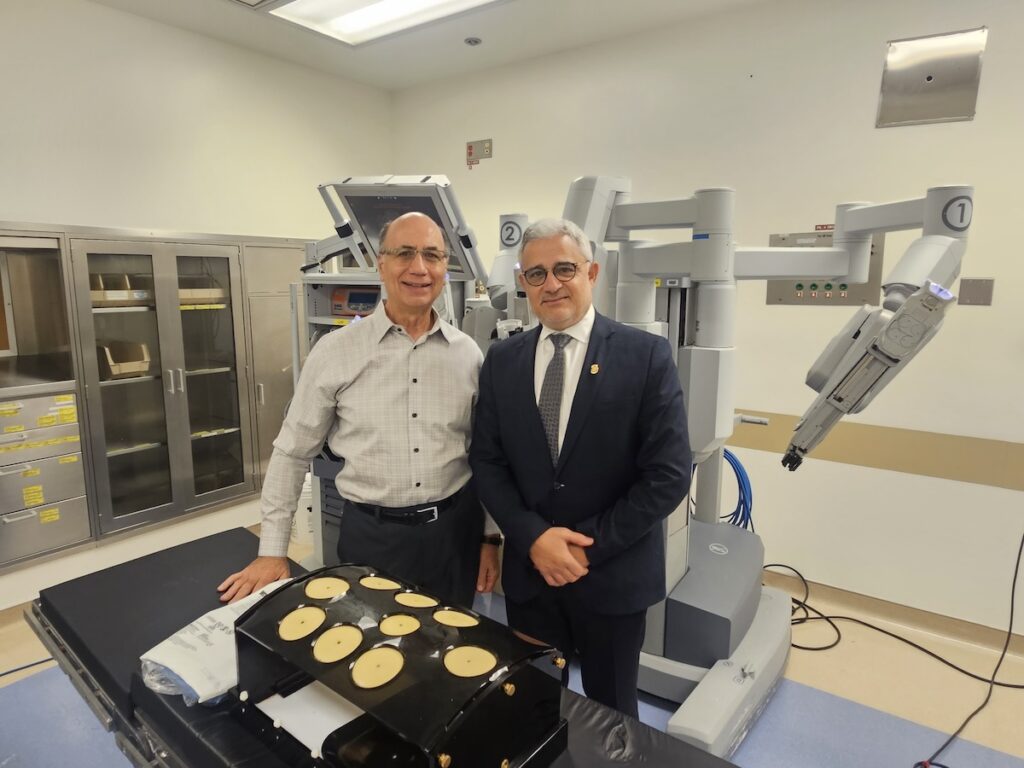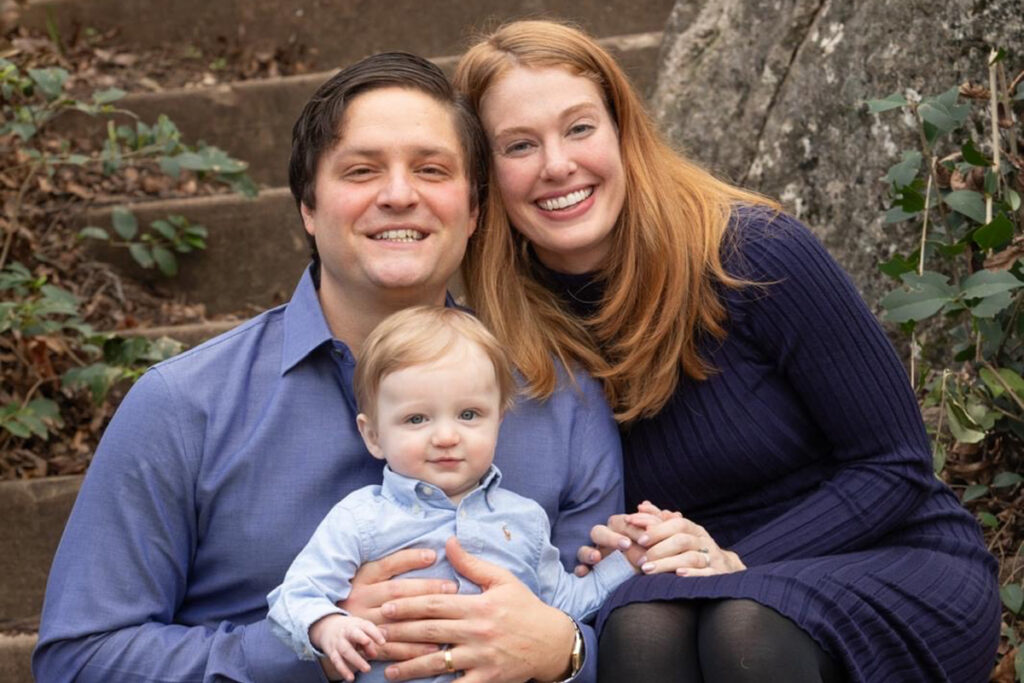When Beth Scott, MD, needed heart surgery, she knew she didn’t want traditional coronary artery bypass graft (CABG) surgery.
“As a retired radiologist, I had seen countless images of traditional CABG. I know the amount of time in the hospital, the pain involved, and the time it takes to recover,” said Scott.
However, Scott and her husband had just moved to Chicago, and they soon realized the ideal option for her care was at UChicago Medicine with Husam Balkhy, MD, the director of Robotic and Minimally Invasive Cardiac Surgery.
Balkhy mastered minimally invasive techniques when they emerged in the early 2000s, learning to repair the heart without opening the chest. Robotic cardiac surgery proved to be not only less invasive, but also as effective and safe as traditional open-heart surgery.
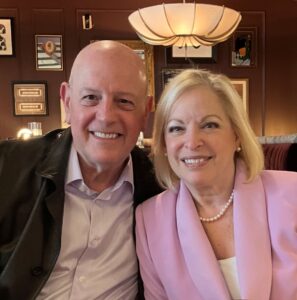
Scott’s husband, Bob Glickman, recalled the overwhelming relief he felt following the surgery.
“Beth was facing a really high probability of death. But she was home in less than 48 hours, resuming normal activity in two to three weeks.”
Scott and Glickman joined a growing community of philanthropists focused on robotic cardiac surgery. By supporting the education and training of more practitioners, they hope to make the procedure accessible to more patients.
Meeting Demand
Despite good outcomes and enthusiastic recommendations by patients, robotic cardiac surgery is only available at a few highly specialized cardiac centers, such as UChicago Medicine. Robotic equipment is costly, and practitioners require extensive training. At the same time, demand for robotic surgery is high, with two-to-five-month wait times for patients.
Faced with the inevitable prospect of heart surgery, Ian Watson followed the advice of his primary care physician at Northwestern Medicine and consulted with Balkhy. He learned that Balkhy’s work with robotics had expanded the range of cardiac procedures available to include CABG, valve repair and replacement, and adult congenital and arrythmia surgery. Balkhy was able to treat Watson’s condition—and Watson, like Scott, experienced a remarkably quick recovery.
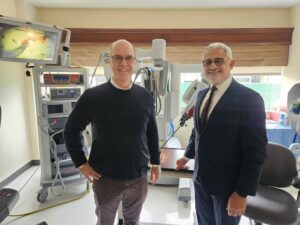
“It gives an enormous sense of calm,” said Watson, whose inspiration to support the field was not just the speed of healing, but the quality of life that followed―a level of care he hopes to help make available to others in the Hyde Park community where he lives.
The promise of technology
Dan Moceri, another patient of Balkhy’s, had a lifelong interest in innovation and technology, which informed his research when he learned he needed cardiac surgery. “I’ve been a Leonardo Da Vinci fan since I was a little kid. When this technology [the DaVinci Surgical system used in robotic cardiac surgery] cropped up 20 plus years ago, I had to get a better understanding of it.”
He, too, discovered that he could seek care locally at UChicago Medicine. “With Dr. Balkhy, I saw a very skilled surgeon who used technology to augment his incredible skills.”
Like his fellow philanthropists, Moceri’s satisfaction with the success of his surgery and speed of healing inspired him to support Balkhy’s commitment to innovation. “In 2012, my wife and I created our foundation,” Moceri said. “One of the things that she really taught me was the value of kindness and helping out, and she always wanted to thank her doctors by supporting them. Since she passed away from cancer, I’ve continued the work.”
Moceri’s gift created the Robotic Cardiac Surgery Catalyst Fund, which will, in part, train more heart surgeons who want to master robotic techniques.
Innovation and expansion
Balkhy’s vision for the future of builds on UChicago Medicine’s early investments in robotic technologies. “I was so impressed with UChicago Medicine’s commitment to innovation before most other large programs started espousing the robot in cardiac surgery. They were visionary, they saw the potential,” said Balkhy.
Today, Balkhy is president of the International Society for Minimally Invasive Cardiothoracic Surgery (ISMICS), an international group working with biotech industry leaders to expand and innovate robotic surgical equipment in order to bring more affordable systems into the marketplace.
Jeffrey Matthews, MD, surgeon-in-chief and chair for the University of Chicago Health System has seen how philanthropy advances training and innovation in robotics.
“As we expand our knowledge and extend the skills of our surgical teams to include robotic techniques, we can offer a wide range of minimally invasive treatment options to our patients,” said Matthews. “Our goal is to offer the highest standard of care to our patients.”
Crucially, in addition to training, Moceri’s fund will also support the purchase of equipment, allowing surgeons from a range of disciplines to train in less invasive techniques. UChicago Medicine now offers robotic surgery in gynecology, thoracic, general surgery, urology, otolaryngology (ear, nose, and throat), as well as cardiac surgery. As surgeons find new ways to incorporate robotic techniques across many fields and disciplines, more patients will have access to minimally invasive surgery.

